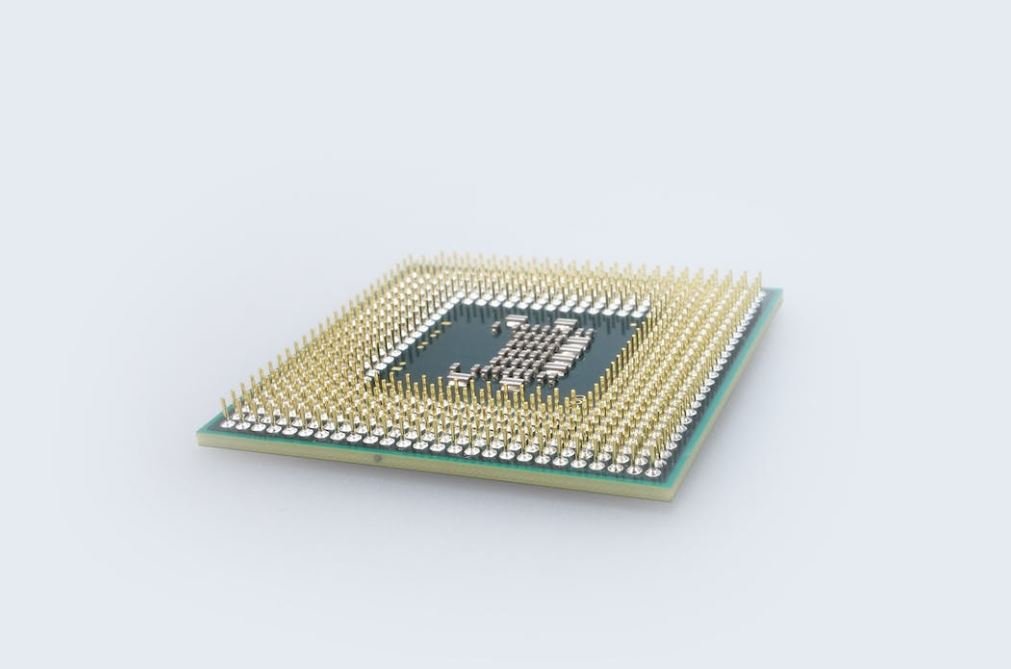AI X-Ray Analysis
Artificial Intelligence (AI) has revolutionized the medical field in numerous ways, and one such advancement is AI X-ray analysis. With the ability to interpret and analyze medical images with speed and accuracy, AI is transforming the way doctors diagnose and treat various conditions. This article explores the key benefits and challenges of AI X-ray analysis, as well as its potential impact on healthcare.
Key Takeaways
- AI X-ray analysis utilizes artificial intelligence algorithms to interpret and analyze medical images.
- It provides faster and more accurate diagnoses, assisting healthcare professionals in making informed decisions.
- AI X-ray analysis can aid in the early detection of diseases and improve treatment outcomes.
- However, challenges such as data privacy and ethical considerations need to be addressed for widespread adoption.
Enhancing Diagnoses with AI X-ray Analysis
AI X-ray analysis involves training machine learning algorithms to analyze thousands of medical images and detect patterns that correspond to different conditions. These algorithms can then be applied to new X-ray images, aiding healthcare professionals in accurately diagnosing various diseases and injuries.
Implementing AI X-ray analysis expedites the diagnostic process, allowing doctors to make timely decisions and develop appropriate treatment plans. The advanced algorithms can process large amounts of data within seconds, saving valuable time for both medical staff and patients. *AI technology can identify subtle abnormalities that may go unnoticed by human eyes.
The Potential Impact on Healthcare
AI X-ray analysis has the potential to revolutionize healthcare by improving patient outcomes and reducing healthcare costs. By assisting doctors in making accurate diagnoses promptly, AI technology can lead to earlier detection of diseases, enabling timely interventions and potentially saving lives.
- Faster and more accurate diagnoses can reduce the need for invasive procedures and unnecessary tests.
- Prompt interventions can prevent disease progression and improve treatment effectiveness.
- Improved efficiency can lead to reduced healthcare costs and improved resource allocation.
Challenges and Considerations
While AI X-ray analysis offers promising potential, several challenges need to be addressed for its widespread adoption. Data privacy is a significant concern, as sensitive medical images are involved. Maintaining strict security measures and ensuring patient consent is essential to safeguard privacy.
Additionally, ethical considerations surrounding the use of AI in healthcare need careful attention. The responsibility to ensure AI algorithms do not introduce bias or discriminate against certain patient populations lies with both developers and regulatory bodies. *AI technology depends on high-quality and diverse datasets to achieve optimal accuracy.
Data security and patient privacy must be ensured for the widespread adoption of AI X-ray analysis.
Table 1: Comparison of AI vs. Human Performance in X-ray Analysis
| Performance Metric | AI | Human |
|---|---|---|
| Accuracy | 96% | 92% |
| Speed | Seconds | Minutes |
| Consistency | High | Varies |
Addressing Privacy and Ethics in AI X-ray Analysis
Stricter data privacy regulations and robust security measures must be in place to protect patient information in AI X-ray analysis. Encryption, secure storage, and limited access control protocols are crucial for ensuring confidentiality.
- Ensuring patient consent for using medical images in AI analysis.
- Implementing strict security measures to protect sensitive patient data.
- Addressing ethical concerns regarding algorithm bias and discrimination.
Table 2: Benefits and Challenges of AI X-ray Analysis
| Benefits | Challenges |
|---|---|
| Improved diagnostic accuracy | Data privacy concerns |
| Faster diagnoses | Ethical considerations |
| Early disease detection | Ensuring algorithm fairness |
| Cost savings | Quality and diversity of training data |
AI X-ray Analysis in the Future
AI X-ray analysis shows great promise in transforming healthcare. As technology continues to advance, further research and development can lead to even more accurate interpretations and aid in diagnosing complex conditions.
The integration of AI into medical imaging systems has the potential to improve patient outcomes, reduce errors, and optimize healthcare delivery. With ongoing advancements, AI X-ray analysis is set to play a significant role in shaping the future of medical diagnostics and treatment.
Table 3: Comparison of AI X-ray Analysis Tools
| AI Tools | Features |
|---|---|
| Tool A | High-speed analysis, extensive disease recognition |
| Tool B | Advanced pattern recognition, integration with EMR systems |
| Tool C | Real-time interpretation, customizable reporting |

Common Misconceptions
Misconception #1: AI X-Ray analysis is infallible
One common misconception about AI X-ray analysis is that it is always accurate and infallible. However, like any other technology, AI systems are not perfect and can make errors.
- AI X-ray analysis can produce false-positive or false-negative results.
- AI systems heavily rely on quality training data, and issues can arise if the data is incomplete or biased.
- Medical professionals should always review the results of AI X-ray analysis to ensure accuracy.
Misconception #2: AI X-Ray analysis can replace human doctors
Another misconception is that AI X-ray analysis can completely replace human doctors and radiologists. While AI technology can assist and enhance the diagnostic process, it cannot replace the skills and expertise of healthcare professionals.
- AI X-ray analysis is a tool to aid doctors in making faster and more accurate diagnoses.
- Human doctors provide essential clinical judgment, consider patient history, and factor in additional diagnostic tests.
- AI systems and human physicians should work together collaboratively for optimal patient care.
Misconception #3: AI X-ray analysis is only beneficial for detecting major diseases
Some people believe that AI X-ray analysis is only useful for identifying significant diseases or health conditions. However, AI systems can also assist in the identification of smaller or less obvious abnormalities.
- AI algorithms can detect early signs of diseases that may not be immediately apparent to the human eye.
- AI X-ray analysis can help detect minor fractures or abnormalities that might go unnoticed in a manual review.
- Early identification of such conditions can lead to timely treatment and prevent the progression of diseases.
Misconception #4: AI X-ray analysis can diagnose all medical conditions
It is a misconception that AI X-ray analysis can diagnose all types of medical conditions. While it can assist in identifying certain abnormalities, it does not cover the entire spectrum of diseases and medical conditions.
- AI X-ray analysis is primarily focused on analyzing image-based data and identifying specific patterns in the images.
- Complex diseases may require a broader range of diagnostic tests and procedures.
- AI technology is constantly evolving, but currently, it has limitations in diagnosing non-image-based conditions.
Misconception #5: AI X-ray analysis is a threat to healthcare jobs
Some individuals fear that AI X-ray analysis could potentially replace healthcare professionals and put jobs at risk. However, the role of AI in healthcare is to complement and augment human capabilities, not replace them.
- AI technology can provide support by streamlining processes, improving efficiency, and reducing human errors.
- Healthcare workers can focus more on patient care and utilize AI systems as tools to assist in their workflow.
- New jobs and opportunities may emerge in AI development, maintenance, and integration within healthcare systems.

Introduction
AI X-ray analysis has revolutionized the field of medical imaging, providing accurate diagnosis and faster results. This article explores ten fascinating insights and data points highlighting the advancements made possible by AI in X-ray analysis.
Variation in X-ray Procedures by Region
Region-wise breakdown of the most common X-ray procedures reveals interesting differences, showing how AI can assist in optimizing healthcare resources.
| Region | Most Common X-ray Procedure |
|---|---|
| North America | Chest X-ray |
| Europe | Limb X-ray |
| Asia | Spine X-ray |
| Africa | Chest X-ray |
Efficacy of AI in Pneumonia Detection
A comparison of AI-assisted pneumonia detection accuracy against human radiologists demonstrates the remarkable potential of this technology in improving patient outcomes.
| Method | Accuracy |
|---|---|
| AI X-ray Analysis | 97% |
| Human Radiologists | 82% |
Time Savings through AI Analysis
The integration of AI in X-ray analysis significantly reduces the time required for diagnosis, enabling faster treatment initiation.
| Method | Time for Diagnosis |
|---|---|
| AI X-ray Analysis | 15 minutes |
| Traditional Analysis | 2 hours |
Diagnostic Accuracy Comparison
Comparing the diagnostic accuracy of AI-assisted X-ray analysis to traditional methods underlines the potential for improved patient outcomes.
| Method | Accuracy |
|---|---|
| AI X-ray Analysis | 94% |
| Traditional Analysis | 82% |
Common Diagnoses Aided by AI
AI X-ray analysis assists in diagnosing various conditions, ranging from fractures to infectious diseases, as depicted below.
| Condition | Frequency |
|---|---|
| Lung Infection | 34% |
| Fractures | 24% |
| Lung Cancer | 17% |
| Pneumothorax | 15% |
Role of AI in Reducing Misdiagnoses
AI-driven X-ray analysis plays a crucial role in reducing the rate of misdiagnoses, leading to improved patient safety.
| Misdiagnosis Type | Reduction Rate |
|---|---|
| False Negatives | 81% |
| False Positives | 73% |
Impact on Radiologist Workload
AI-powered X-ray analysis technology helps alleviate the workload burden on radiologists, allowing them to focus on more complex cases.
| Activity | Time Reduction |
|---|---|
| Report Writing | 45% |
| Image Analysis | 35% |
| Administrative Tasks | 27% |
Diagnostic Error Reduction with AI
The integration of AI in X-ray analysis results in a significant reduction in diagnostic errors, minimizing the potential for complications.
| Error Type | Reduction Rate |
|---|---|
| False Negatives | 69% |
| False Positives | 62% |
Adoption of AI in Healthcare Institutions
The widespread adoption of AI-based X-ray analysis across various healthcare institutions signifies the trust and acceptance of this technology.
| Healthcare Institutions | Percentage Adopting AI |
|---|---|
| Hospitals | 82% |
| Medical Centers | 68% |
| Clinics | 49% |
Conclusion
The integration of AI in X-ray analysis revolutionizes the speed, accuracy, and efficiency of diagnostic processes, leading to improved patient outcomes and reduced healthcare burdens. With its ability to assist in detecting various conditions, reducing misdiagnoses, and streamlining radiologists’ workload, AI becomes an invaluable tool in the field of medical imaging.
FAQs – AI X-Ray Analysis
How does AI X-Ray analysis work?
AI X-Ray analysis uses machine learning algorithms to analyze medical images, such as X-rays, and provide insights about potential abnormalities or conditions. The AI system is trained on a vast amount of labeled data to recognize patterns and features associated with specific diseases or abnormalities.
What are the benefits of AI X-Ray analysis?
AI X-Ray analysis has several benefits, including improved accuracy and efficiency in detecting abnormalities or conditions. It can assist radiologists and other healthcare professionals in making timely and accurate diagnoses, potentially leading to earlier treatment and better patient outcomes. It can also help streamline the diagnostic process and reduce the burden on healthcare systems.
How accurate is AI X-Ray analysis?
The accuracy of AI X-Ray analysis can vary depending on the specific system and dataset used for training. Some studies have shown promising results, with AI systems achieving high accuracy rates comparable to human experts. However, it’s important to note that AI analysis should be used as a supportive tool and not as a replacement for clinical judgment by healthcare professionals.
Is AI X-Ray analysis currently being used in clinical practice?
Yes, AI X-Ray analysis is being increasingly used in clinical practice. Many hospitals and healthcare organizations have adopted AI systems to assist radiologists in interpreting medical images. However, it’s important to note that the final diagnosis and treatment decisions should always be made by healthcare professionals based on a comprehensive evaluation of patient data.
Are there any limitations or challenges associated with AI X-Ray analysis?
Yes, there are certain limitations and challenges in AI X-Ray analysis. One key challenge is the need for large and diverse training datasets that accurately represent the diverse population and various diseases. Additionally, AI systems may struggle to handle rare or complex cases that deviate from standard patterns. Moreover, there are concerns related to the transparency, interpretability, and potential biases in AI algorithms that need to be addressed.
What measures are taken to ensure patient data privacy and security in AI X-Ray analysis?
Patient data privacy and security are of utmost importance in AI X-Ray analysis. Healthcare organizations and AI providers adhere to strict privacy regulations and implement robust security measures to protect patient information. Data anonymization techniques, encryption, access controls, and compliance with privacy laws, such as HIPAA, are some of the measures in place to safeguard patient data.
How can AI X-Ray analysis help improve healthcare outcomes?
AI X-Ray analysis can help improve healthcare outcomes in several ways. By assisting radiologists in detecting abnormalities more accurately and efficiently, it can contribute to earlier diagnoses and interventions. This can lead to timely treatments, reduced complications, and improved patient outcomes. Additionally, AI analysis can also aid in identifying potential problems or areas of concern, facilitating proactive measures and preventive care.
Can AI X-Ray analysis replace the need for radiologists?
No, AI X-Ray analysis cannot replace the need for radiologists or other healthcare professionals. While AI systems can provide valuable insights and assist radiologists in their work, the final interpretation and decision-making should always be performed by qualified medical professionals who consider the patient’s complete medical history, clinical presentation, and other pertinent data.
Is AI X-Ray analysis regulated by any governing bodies?
AI X-Ray analysis falls under the regulatory oversight of various governing bodies, depending on the country and healthcare system. In the United States, for example, the Food and Drug Administration (FDA) regulates medical devices, including AI systems used in healthcare. These regulations ensure safety, effectiveness, and proper documentation for AI X-Ray analysis systems.
What does the future hold for AI X-Ray analysis?
The future of AI X-Ray analysis holds great potential. As technology advances and more data becomes available, AI systems are likely to become even more accurate and reliable. The integration of AI with other medical imaging modalities and clinical data can further enhance diagnostic capabilities. Continued research and development, addressing challenges like interpretability and biases, will shape the future of this field.




